A thorough guide to hand-pulled noodles. Following these techniques, anyone can make deliciously chewy biang biang noodles at home, easily!
You can use these homemade noodles to make Xi'an Foods' famous chili oil biang biang mian.

Jump to:
🍜 Why It Works
Despite how it may seem intimidating, making hand-pulled noodles is one of the most fun kitchen projects! It's easy as long as you follow the techniques below.
Very high flavor return on investment.

With simple ingredients like all-purpose flour, water, and salt—anyone can make these noodles.
First, we'll get a few misconceptions out of the way...like collectively calling all hand-pulled noodles lamian! Then we'll go over every single step so that you can get handmade noodles right every single time.
🇨🇳 What Are Hand-Pulled Noodles?
Hand-pulled noodles are a type of food made by stretching and folding pieces of unleavened dough into long strands and boiling them. Made with common wheat flour, hand-pulled noodles are very popular in China, where noodles were likely invented at least 4,000 years ago.
Here's the basic hand-pulled noodle glossary:
- Biang Biang - Wide and flat noodles; they're the easiest to make. Notice the onomatopoeia? It's because the name allegedly comes from the sound of the dough slapping on the counter as you stretch it!
- Chenmian (or Latiaozi) - Non-alkaline and very similar to biang biang, except they are shaped like spaghetti.
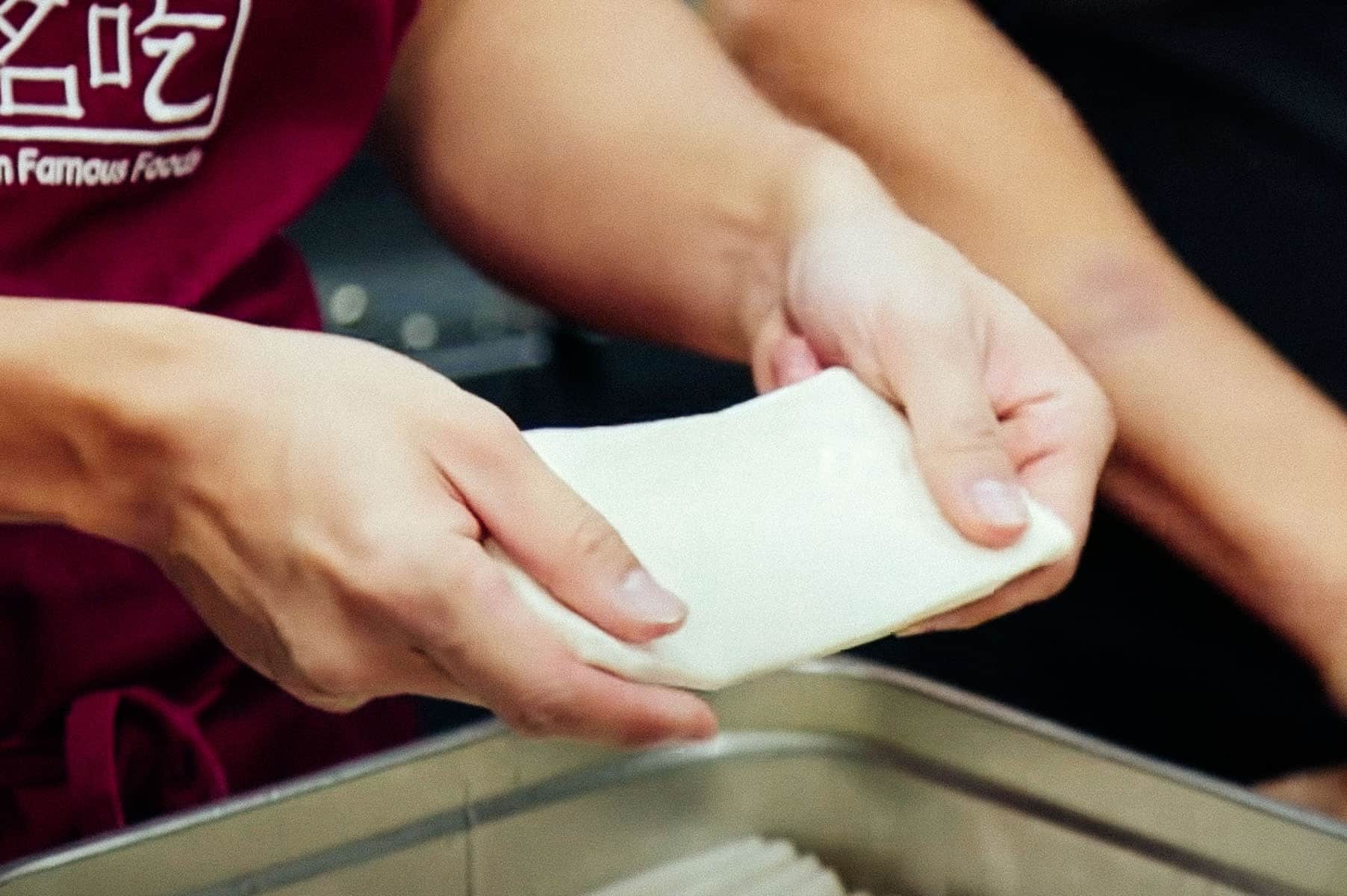
- Lamian - Lanzhou-style yellow alkaline noodles that resemble spaghetti. They are almost impossible to make at home without years of experience and special ingredients like penghui (蓬灰)—a type of tumbleweed (bitter fleabane) burned to ash. Confusingly, in some parts of China, non-alkaline noodles are also called lamian.
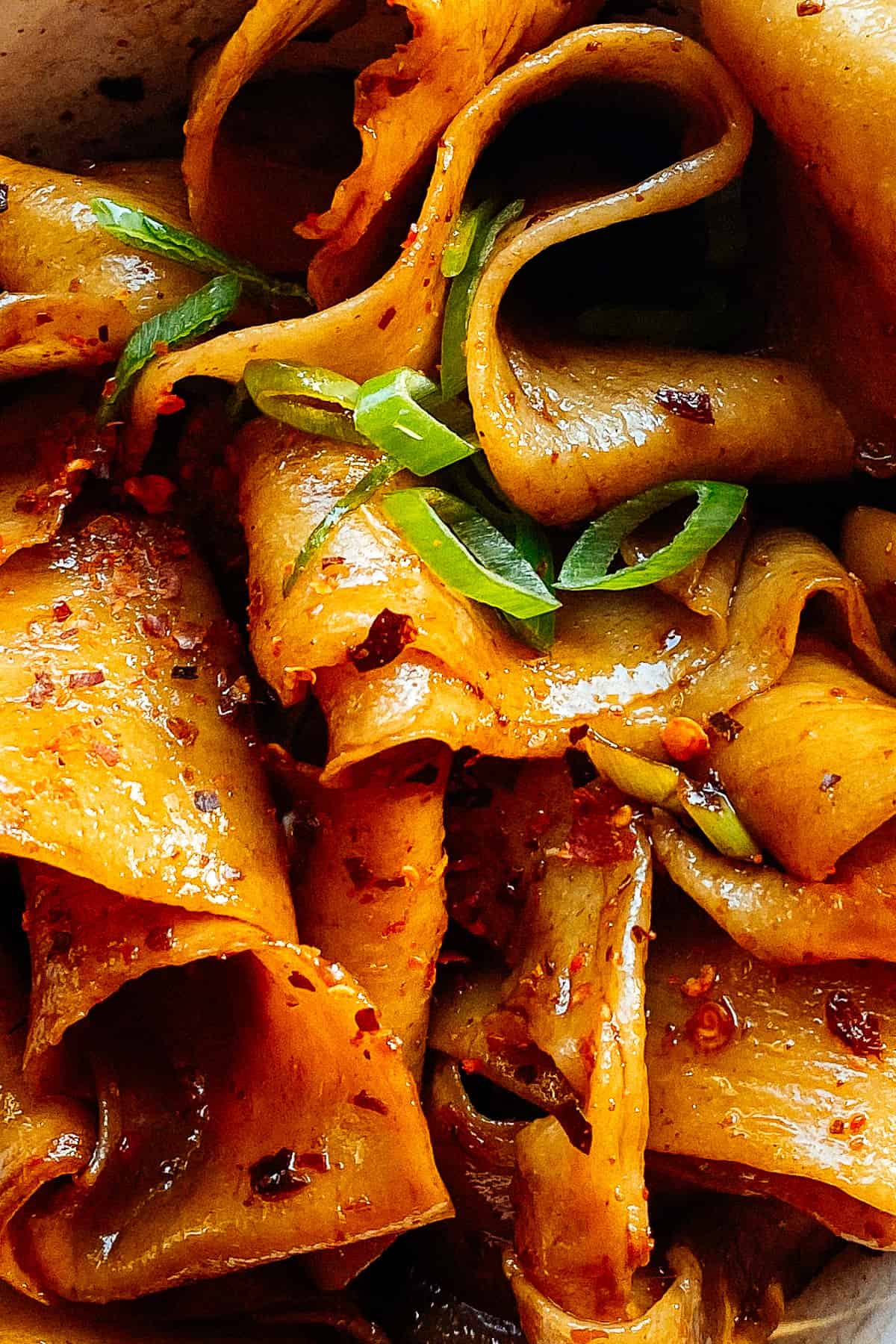
With this guide, you can make biang biang (wide) or latiaozi (thinner) hand-pulled noodles. We won't be covering the holy grail, lamian, because it's virtually impossible to do them justice. Having lived in the San Gabriel Valley (a place delightfully saturated with specialized lamian restaurants), I got to witness the seemingly-impossible expertise this technique takes.
For more information on hand-pulled noodles, you should absolutely read this thorough Reddit guide by Chinese Cooking Demystified.
🌾 Best Flour for Biang Biang Mian
The ideal flour for hand-pulled noodles is freshly milled 00 pizza flour. It will yield the chewiest, most stretchable results. This higher-gluten flour gives noodles more bite, especially if fresh.
But for these non-alkaline noodles, any all-purpose flour with over 10% gluten content will work provided you don't skip the autolyse.
We tested this recipe with King Arthur's regular red wheat all-purpose flour (11.7% protein content) with consistently great results.
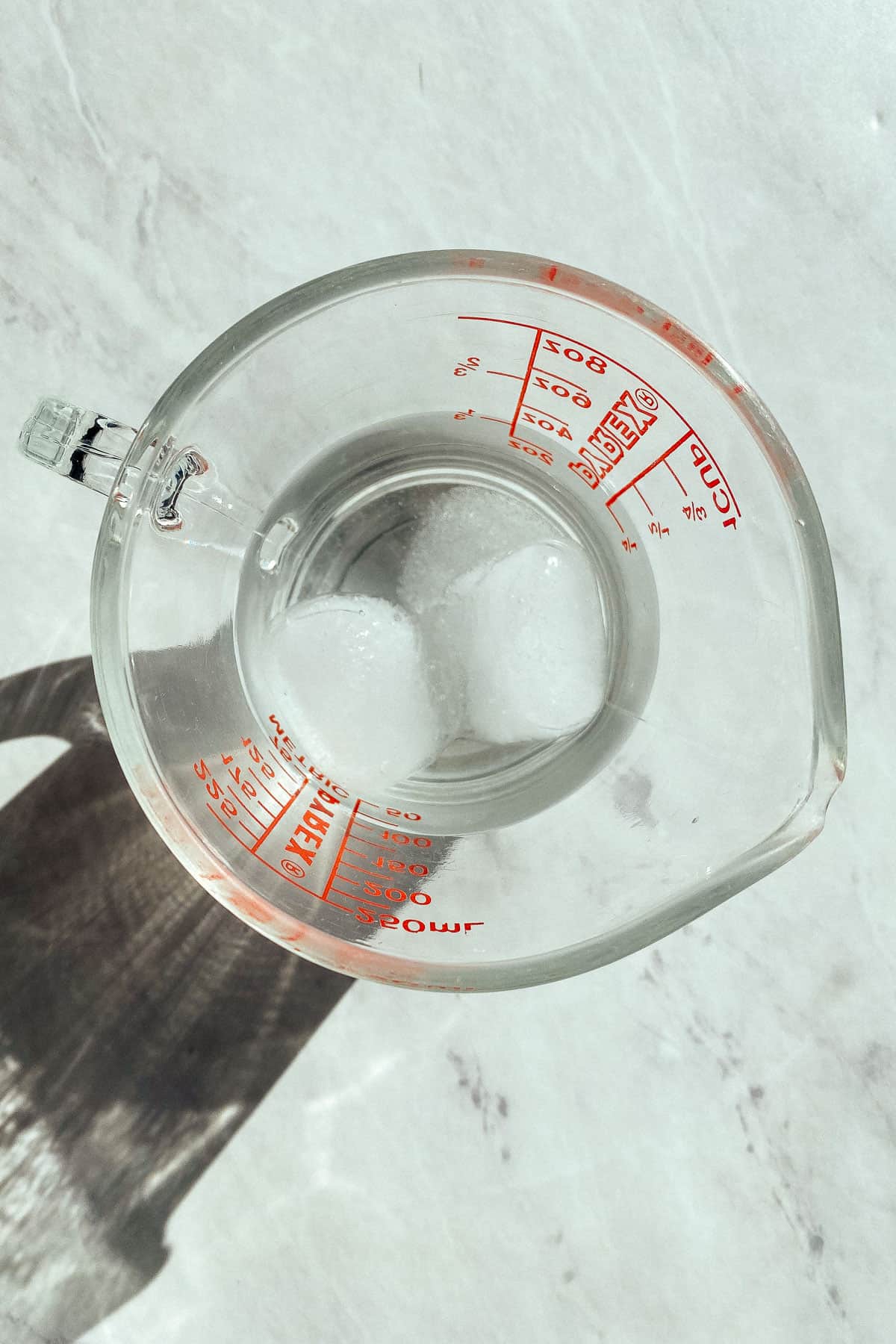
Other Ingredients
- Ice-Cold Water - Hand-pulled noodle dough is 50% hydration. So for every 100 grams of flour, use 50 grams of water. Depending on the flour (type, brand, or protein content), you may need to use slightly more water. But you should absolutely refrain from going above 55% even if the initial dough looks dry. More water makes the dough more workable but will make pulling the noodles a nightmare.
- Table Salt - We'll dissolve the salt in the water to ensure even seasoning.
- Neutral Oil - A few tablespoons of neutral oil (canola, vegetable, etc.) will maintain the dough and make it easier to pull it. We won't use any oil in the dough itself.
⭐️ It's worth noting that some recipes add nutritional yeast, which contains glutathione, to relax gluten more quickly. In our tests (with all-purpose flour), we didn't notice a significant texture or workability difference between noodles that contain ground nutritional yeast (%7 of flour weight, Bragg's) and noodles with no nutritional yeast.
🥣 Kneading
Start by weighing your ingredients. This is possibly the most important step to getting these noodles right.
1. Mix Ice-Cold Water and Salt
Mix them until all the ice is melted and the salt is dissolved.
2. Cat Claw (毛抓手) Technique
Add the flour into a large mixing bowl. Pour the salty water into the bowl bit by bit and rub the flour between your thumb and fingers.
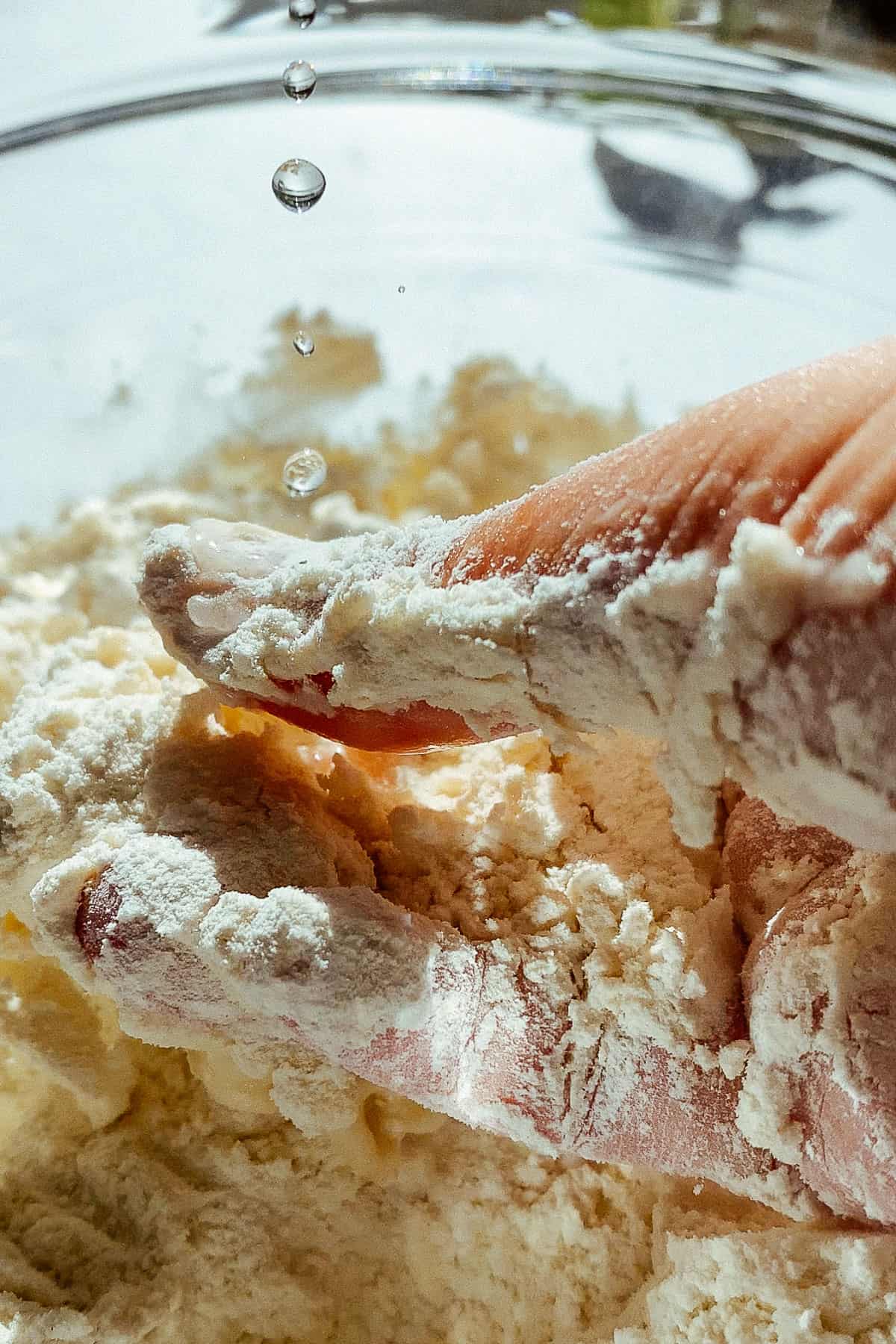
Hydrating the flour without adding more water is the main goal here. If you mix all the flour and water in one go, you'll get dry patches as well as over-hydrated ones instead of homogenous dough.
3. Rough Knead
Roughly knead the dough for a few minutes and shape it into a ball. It will look clumpy and that's okay. Cover with cling wrap and set aside.
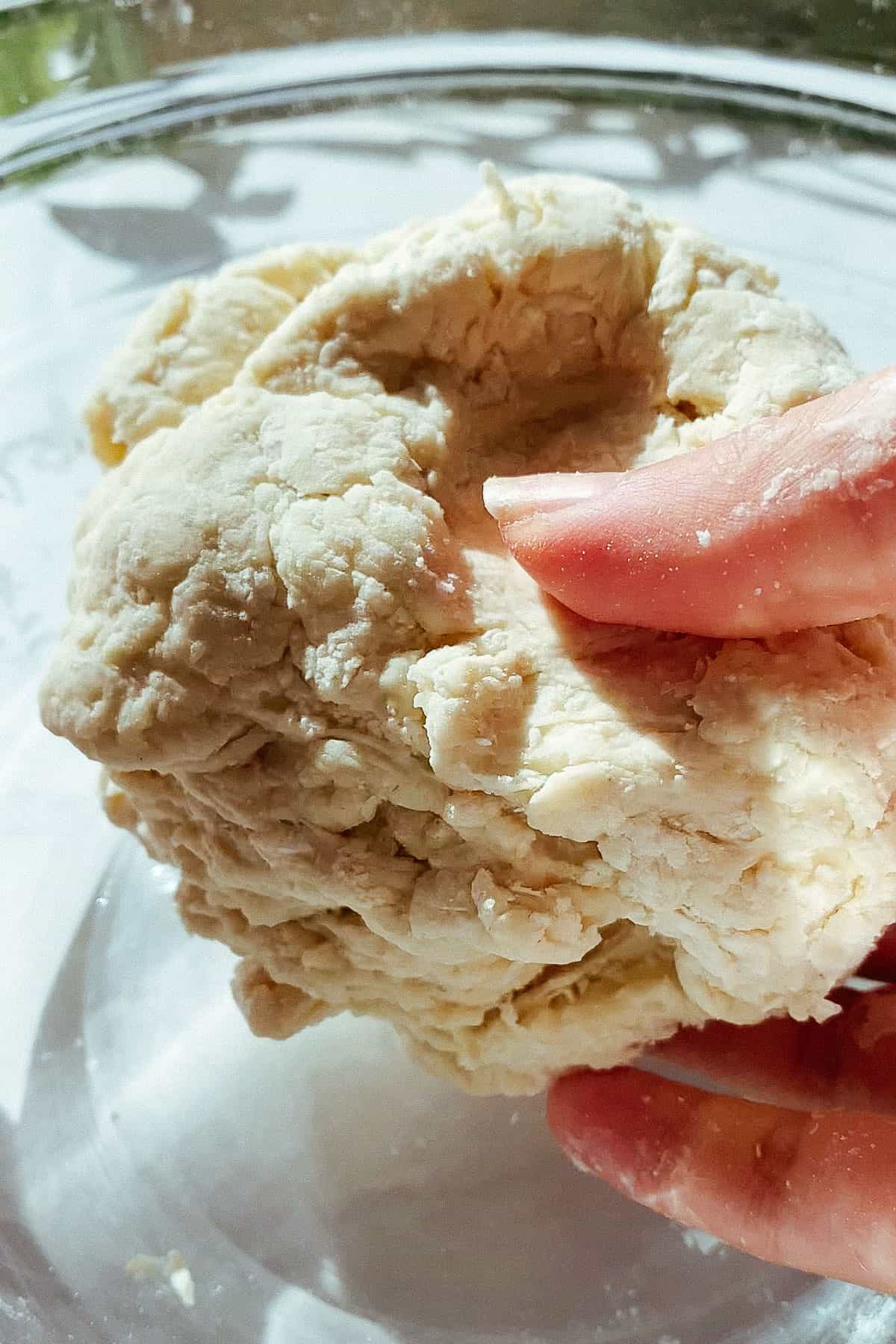
4. Set Aside (Autolyse)
Leave the wrapped ball of dough to rest for 30 minutes to an hour for an autolyse. This process allows the flour to fully hydrate and makes kneading much easier!
With an autolyse, the protease enzyme found in flour gets to work by increasing the extensibility of the dough without any work on your part. A true autolyse is done only with flour and water, but adding the salt later is much more difficult than usual with this low-hydration dough.
5. Knead Again
Knead the dough until smooth, about 5-8 minutes. You can knead the same way as you would bread or any other dough.
If using a stand mixer, knead on low power with the dough hook until the dough is very smooth.
⭐️ Some sources suggest kneading as if making an abacus string (算盘子) in order to align gluten strands. We compared the regular and this more arduous "proper" kneading technique when testing this recipe, and didn't discern any texture difference.
6. Make a Rectangle & Divide
For Biang Biang: With a rolling pin, roll the dough out into a roughly 7-inch by 4-inch rectangle. Cut into four long logs of dough, each will be about 7-inch by 1-inch.

For Chenmian: If making thin noodles, cut each 7x1 strip into six, lengthwise. This will give you 24 thin strips instead of 4 thick logs. You will also need to use more oil for coating.
7. Oil & Rest the Dough Strips
Liberally oil a container or plate and toss the dough strips, making sure all surfaces are thoroughly covered with oil.
Cover with plastic wrap, and ensure that the wrap clings to the surface of the dough strips to minimize air. Set aside on the counter for at least 4 hours.
If you'd like to rest the dough strips overnight in the refrigerator (like pizza dough) for a deeper flavor—make sure to bring it back to room temperature before pulling.
🪢 Pulling Technique
8. Roll Dough Strip & Press with Chopstick
Transfer one of the dough logs onto a large work surface. Pat-dry to remove excess coating oil if necessary. Using a rolling pin, roll it out into a roughly 10-inch long, 3-inch wide sheet.

Using a chopstick, make a shallow indentation right in the middle of your noodle. This will be where we rip it later.
9. Smack the Noodle
Now we smack—or biang biang—the noodle! Gently grab each side, using as little force as possible, and hold the dough in place using your thumbs.
Smack the noodle down against the work surface about 10 times to lengthen.
10. Tear the Center
Tear the noodle from the center through the indentation you made with the chopstick earlier. You can rip both ends, leave them intact, or rip only one end to get an extra-long noodle (this is what we usually do).
For Chenmian: If you're making the thinner noodles (24 strips), roll out each noodle until doubled in length, then pull until the strip no longer feels stretchable. This pull should be consistent and smooth. At this point, you can smack the noodle down against your work surface a few times to lengthen it further. Check out this short video to see the technique.
🔥 Cooking Noodles
11. Boil
Boil your noodles one at a time in salted water until they float, takes about one minute. As the previous ones are boiling, you can prepare the next noodles.
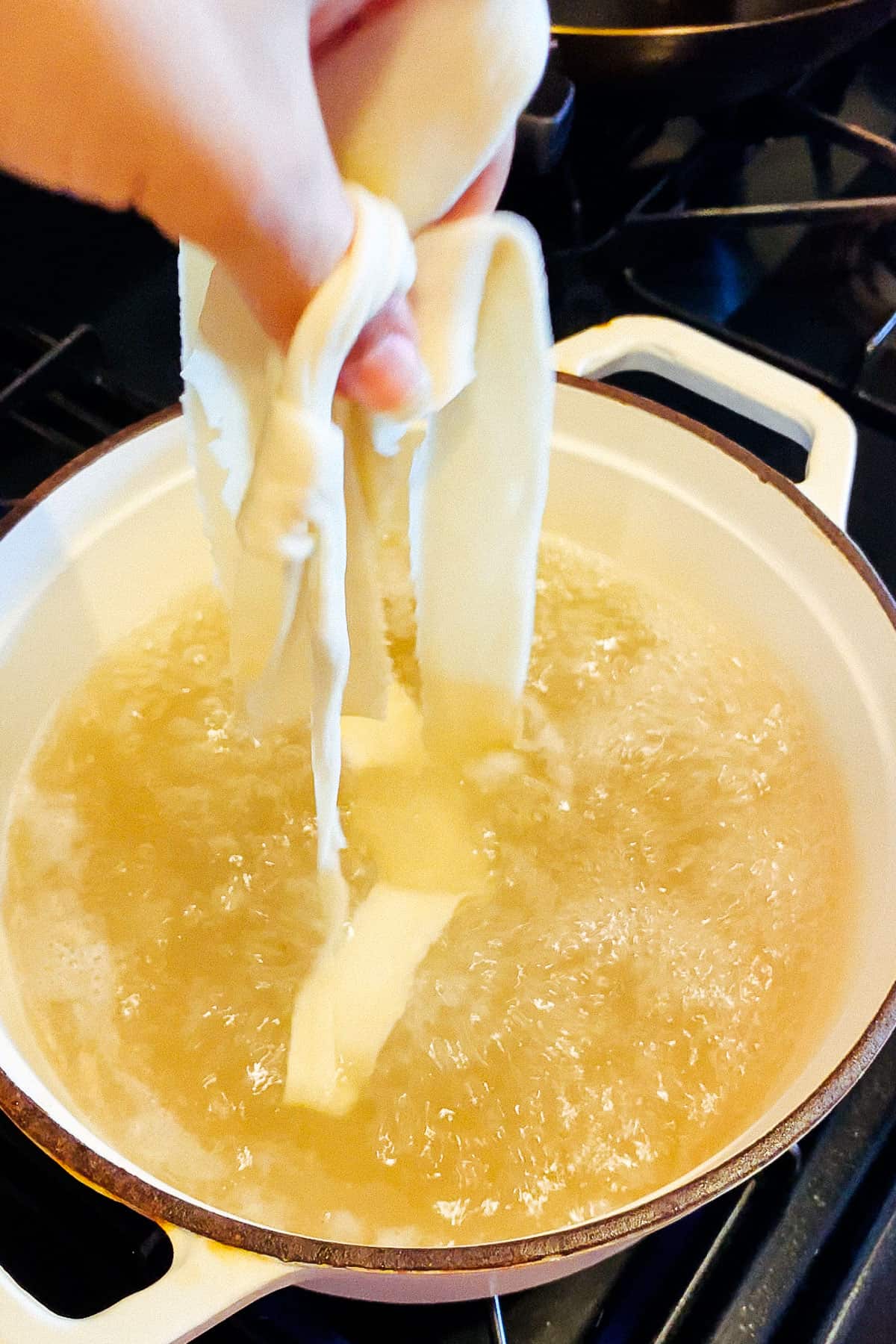
Transfer them to a serving bowl using a pair of tongs or chopsticks, and serve immediately. Please see below for serving ideas.
⭐️ Hand-pulled noodles don't keep well once boiled—many restaurants won't even deliver them for this very reason. But if necessary, you may save them in the refrigerator for up to 3 days. Coat them in a tiny bit of oil to avoid sticking.
💭 Flavor Ideas
- Chili Oil & Garlic (Xi'an Famous Foods) - This is my favorite way to enjoy homemade biang biang noodles. Garlic, ginger, sizzling hot chili oil with some Sichuan peppercorn powder...SO good.
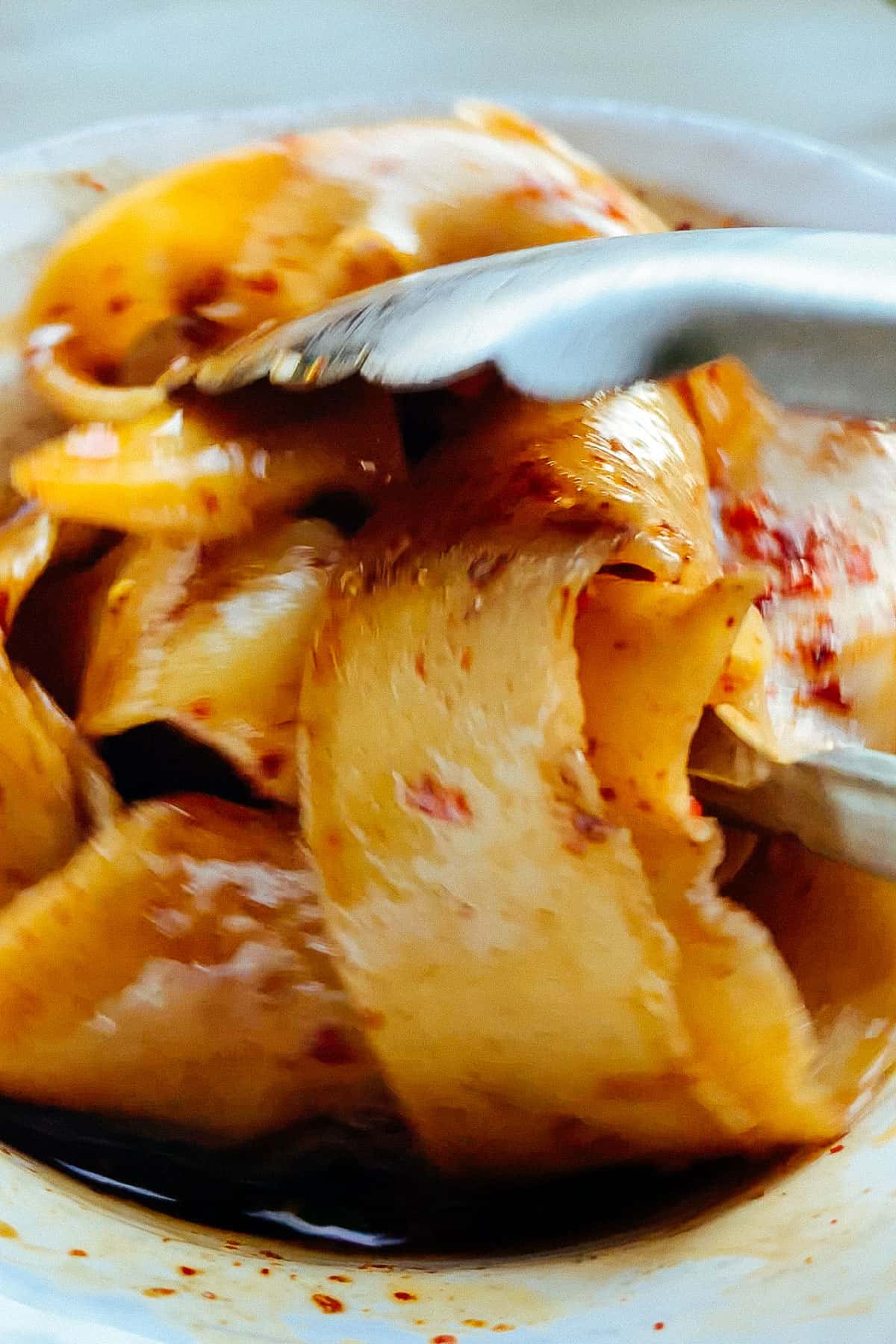
- Dan Dan Noodles - Cut the wide noodles into thinner strips and make this super delicious veganized Dan Dan noodles dish!
- Noodle Soup - For a comfort meal, try your (thin) hand-pulled noodles in a soup with tofu and aromatics.
❓FAQs
Hand-pulled noodles are a type of food made by stretching and folding pieces of unleavened dough into long strands and boiling them. Usually made with wheat flour, hand-pulled noodles are very popular in China.
Although it depends on the specific recipe, hand-pulled noodles are usually vegan as the dough itself doesn't contain any animal-based ingredients such as eggs or dairy.
Named after the sound they make when slapped on the counter to get stretched, biang biang noodles are hand-pulled, wide, and flat noodles. They are often referred to as the easiest hand-pulled noodles to make.
Unfortunately, Xi'an Famous Foods no longer has a vegan biang biang noodle option. While the hot oil biang biang noodles that had all-vegan ingredients used to be boiled in water, they are now cooked in beef/pork stock.
Lamian noodles are Lanzhou-style alkaline noodles that resemble spaghetti. They are almost impossible to make at home without years of experience and special ingredients like penghui (蓬灰)—a type of tumbleweed (bitter fleabane) burned to ash. Confusingly, in some parts of China, non-alkaline noodles are also called lamian.
While alkaline noodles are the gold standard when it comes to chewiness, they are infamously difficult to hand-pull since the alkaline environment makes the dough less stretchable. They also require special ingredients such as penghui (蓬灰) or kansui (枧水).
Luckily, non-alkaline chenmian noodles can also be very chewy and delicious with sufficient gluten development.
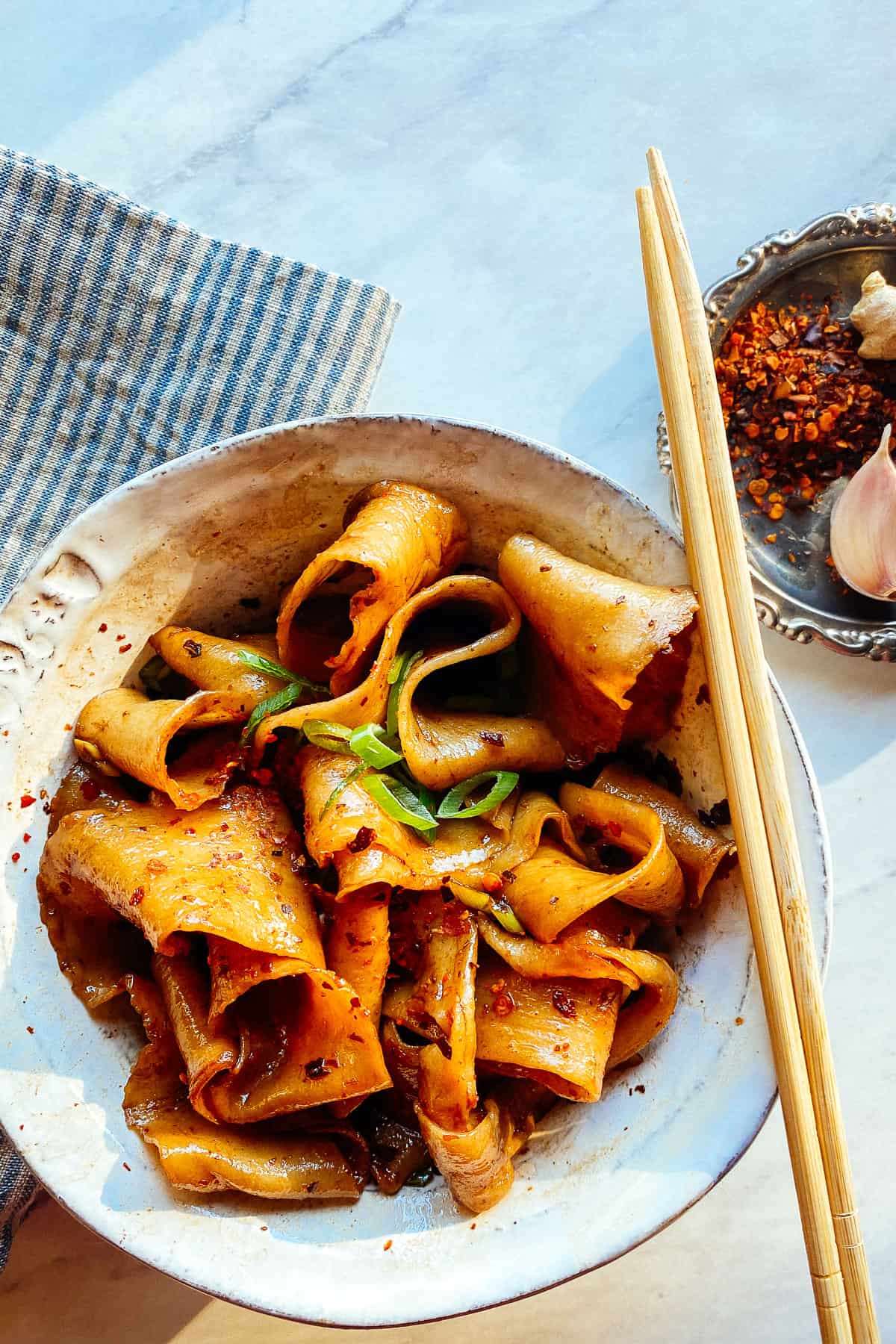
🌶 More Recipes
Did you find this hand-pulled noodles guide helpful? I'd love to hear about it! Please comment and leave a star🌟 rating below. This helps me run Aegean Delight and I always appreciate it 🙂
Print📖 Recipe
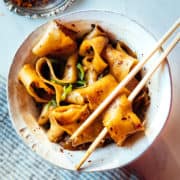
Easy Hand-Pulled Noodles (Biang Biang)
- Total Time: 5 hours 2 minutes
- Yield: 4 Servings 1x
- Diet: Vegan
Description
A thorough guide to hand-pulled noodles. Following these techniques, anyone can make deliciously chewy biang biang noodles at home, easily!
Ingredients
- 200g (about 1 ½ cups) 00 pizza flour OR all-purpose flour (see notes)
- 100g (scant ½ cup) ice-cold water
- ½ teaspoon (3g) table salt
- 3 tablespoons or more neutral oil, for coating
Instructions
Prepare the Dough
- Mix the ice-cold water with salt until all ice is melted and the salt is dissolved.
- Add the flour into a large mixing bowl. Pour the salty water into the bowl bit by bit, and rub the flour between your thumb and fingers. Take your time; hydrating the flour without adding more water is the main goal here.
- Roughly knead the dough for a few minutes and shape it into a ball. It will look clumpy and that's okay. Cover with cling wrap and set aside for 30 minutes-1 hour. The light autolyse allows the flour to fully hydrate and makes pulling easier.
- After the autolyse, knead the dough until smooth, about 5-8 minutes. You can knead the same way as you would bread or any other dough. If using a stand mixer, knead on low power with the dough hook until the dough is very smooth.
Divide & Rest the Dough
- With a rolling pin, roll the dough out into a roughly 7-inch by 4-inch rectangle. Cut into four long dough strips, each will be about 7-inch by 1-inch. If making thin noodles (chenmian/latiaozi), see notes.
- Liberally oil a container or plate and toss the dough strips, making sure all surfaces are thoroughly covered with oil.
- Cover the container with plastic wrap, and ensure that the wrap clings to the surface of the dough strips to minimize air. Set aside on the counter for at least 4 hours. If you'd like to rest the dough strips overnight in the refrigerator (like pizza dough) for a deeper flavor—make sure to bring it back to room temperature before pulling.
Pull/Smack the Noodles
- Transfer one of the dough logs onto a large work surface. Pat dry to remove excess coating oil if necessary. Using a rolling pin, roll it out into a roughly 10-inch long, 3-inch wide sheet.
- Using a chopstick, make a shallow indentation right in the middle of your noodle. This will be where we rip it later.
- Now smack—or biang biang—the noodle by gently grabbing each side. Using as little force as possible, hold the dough in place using your thumbs, and smack the noodle down against the work surface about 10 times to lengthen it.
- Tear the noodle from the center through the indentation you made with the chopstick earlier. You can rip both ends, leave them intact, or rip only one end to get an extra-long noodle (this is what we usually do).
Boil & Serve
- Boil your noodles one at a time in salted water until they float, takes about 1-2 minutes. As the previous ones are boiling, you can prepare the next noodles.
- Transfer them to a serving bowl using a pair of tongs or chopsticks, and serve immediately. Please see the notes below for serving ideas.
- They don't keep well, but if necessary, you may save them in the refrigerator for up to 3 days. Coat them in a tiny bit of oil to avoid sticking.
Notes
Scale — Weighing your flour and water using a kitchen scale is highly recommended as volume measurements can often be inaccurate.
Flour — The ideal flour for hand-pulled noodles is freshly milled 00 pizza flour. It will yield the chewiest, most stretchable results. This higher-gluten flour gives noodles more bite, especially if fresh. But for these non-alkaline noodles, any all-purpose flour with over 10% gluten content will work provided you don't skip the autolyse. We tested this recipe with King Arthur's regular red wheat all-purpose flour (11.7% protein content) with consistently great results.
Hydration — With King Arthur's AP flour, 50% hydration yielded perfectly chewy, easy-to-pull noodles. Depending on which flour you are using, you may need to add a bit more water—up to 55%.
Thin Noodles (Chenmian) — After cutting the 7-inch by 4-inch rectangle into four long dough strips, further cut each 7x1 strip into six, lengthwise. This will give you 24 thin strips instead of 4 thick logs. You will also need to use more oil for coating. After the minimum-4-hour-long rest, roll out each noodle until doubled in length, then pull until the strip no longer feels stretchable. This pull should be consistent and smooth. At this point, you can smack the noodle down against your work surface a few times to lengthen it further. Check out this short video to see the technique. All other steps are identical to making the wide biang biang noodles.
Serving Suggestions — Hot Chili Oil & Garlic Biang Biang Noodles (Xi'an Famous Foods' Copycat); Dan Dan Noodles (made with thinner chenmian noodles); Garlic & Tofu Soup (better with thinner noodles).
- Prep Time: 30 minutes
- Rest Time: 4 hours 30 minutes
- Cook Time: 2 minutes
- Category: Mains, Pasta, Chinese
- Method: Boil
- Cuisine: Chinese
This article was heavily influenced by Chinese Cooking Demystified's Reddit post and videos on hand-pulled noodles. Steph and Chris are one of our favorite sources to better understand Chinese cuisine—right after my mother-in-law. 🙂






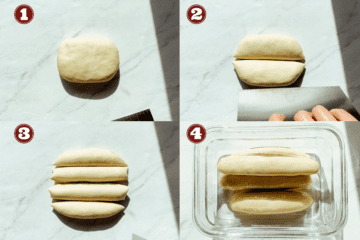
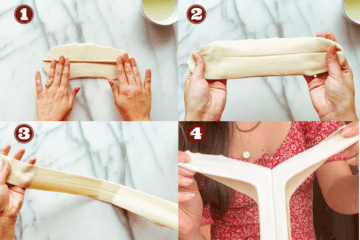




Comments
No Comments